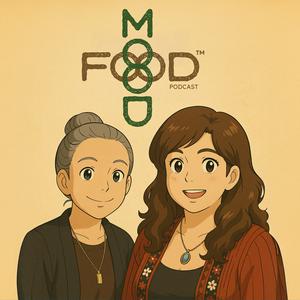Mood Food Ep 5 - Gingko
with Pramila Vishvanath LCEH, PA, ND
and Prreeti Butani
https://podcasts.apple.com/us/podcast/mood-food/id1813460257
https://open.spotify.com/show/4yXMyV4V3bQfr01KRbZSPt
https://www.instagram.com/moodfood_podcast/
https://www.tiktok.com/@moodfood1111
https://linktr.ee/MoodFoodPodcast
https://integratedhealthcenteronline.com/
Eat Real Food!
This podcast is intended for informational and educational purposes only. The discussions herein, including those involving licensed professionals such as naturopathic doctors, do not constitute medical, nutritional, or therapeutic advice. Listeners should not act upon the information provided without first consulting a qualified healthcare provider. The views expressed by the hosts and guests are their own and do not necessarily reflect the opinions or positions of any affiliated organizations. No doctor-patient relationship is established through this podcast.
HISTORY
Sichuan cuisine came to the United States primarily in the mid-to-late 20th century, particularly gaining popularity in the 1970s and 1980s, although its roots in Chinese American food culture date back further.
Late 1800s – Early 1900s: Chinese immigration, mainly from Guangdong (Canton), influenced early Chinese American cuisine (e.g., chop suey, egg foo young). Sichuan cuisine was virtually unknown in the U.S. at this time.
1949–1950s: After the Chinese Communist Revolution, many mainland Chinese, including Sichuanese chefs, fled to Taiwan, Hong Kong, and the West. Some later migrated to the U.S., bringing regional specialties.
1960s–1970s: Greater political openness and increased immigration brought more regional Chinese cuisines to the U.S. Sichuan dishes like kung pao chicken and mapo tofu began to appear in urban Chinatowns.
1980s: Major American interest in bold flavors and “exotic” cuisines helped Sichuan food stand out. Americanized versions of Szechuan beef and Szechuan chicken gained popularity in restaurants.
1990s–2000s: Authentic Sichuan restaurants, often run by recent immigrants or chefs trained in China, opened in large cities (NYC, LA, SF), offering a more traditional approach: use of Sichuan peppercorns, chili oil, and fermented pastes.
2010s–Present: Sichuan cuisine became a culinary trend, with food critics and chefs highlighting its complex flavors (mala – numbing and spicy). Dishes like dan dan noodles and dry pot became popular even beyond Chinatown.
Key Factors in Its Popularity
* Unique flavor profile: Spicy, numbing (mala), and intensely aromatic—stood out from other Chinese regional cuisines.
* Culinary curiosity: American diners became more adventurous, seeking authentic flavors.
* Media exposure: Food shows, blogs, and chef endorsements popularized regional Chinese cooking.
* Immigration: A steady stream of immigrants from Sichuan and Chongqing brought authentic cooking styles.
Common Sichuan Dishes That Gained U.S. Popularity
* Kung Pao Chicken (宫保鸡丁)
* Mapo Tofu (麻婆豆腐)
* Twice-Cooked Pork (回锅肉)
* Dan Dan Noodles (担担面)
* Sichuan Hot Pot (火锅)
What is the benefit of eating food with chilies, either fresh or dried red peppers?
Eating food with chilies—whether fresh or dried red peppers—offers several health benefits due to their rich content of capsaicin, vitamins, and antioxidants. Here's a concise breakdown:
1. Capsaicin increases thermogenesis (heat production), which may help burn more calories and promote fat loss.
2. Capsaicin reduces pain by depleting substance P, a neuropeptide involved in sending pain signals to the brain. Often used in topical creams.
3. May reduce blood pressure, cholesterol, and improve circulation. Studies suggest lower heart disease risk in populations that regularly consume spicy foods.
4. Chillies are high in vitamin C, beta-carotene, and flavonoids, which help reduce oxidative stress and inflammation.
5. Stimulates gastric juices and enzymes, promoting better digestion—though it may irritate sensitive stomachs.
6. Capsaicin has been shown to inhibit the growth of some harmful bacteria and fungi.
7. Eating chillies triggers endorphin release (natural "feel-good" chemicals), sometimes called a "spicy high."
8. Some studies link spicy food consumption with reduced mortality and better metabolic profiles.
Bonus: Brain and Respiratory Benefits
* Clears sinuses and opens nasal passages—great for colds and allergies.
* May protect the brain by reducing neuroinflammation (early research only).
Cautions
* Excess can cause heartburn, gastritis, or bowel irritation, especially in people with sensitive GI tracts or ulcers.
* Fresh chilies are higher in vitamin C, while dried ones are more concentrated in capsaicin.


